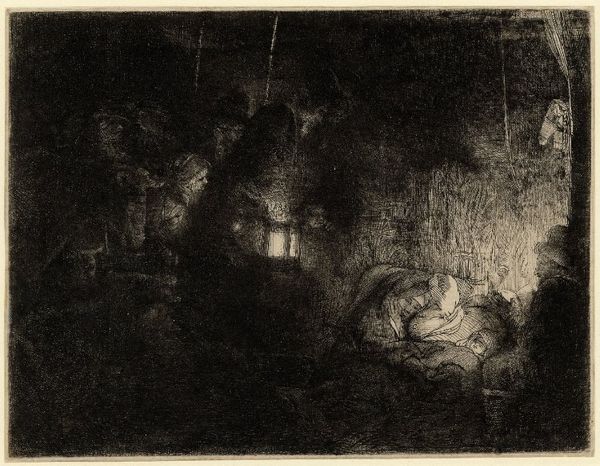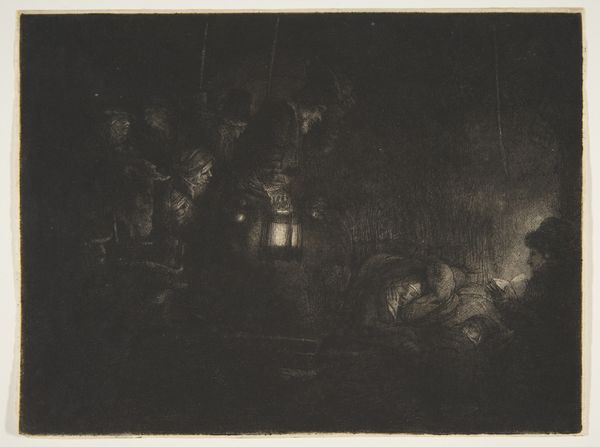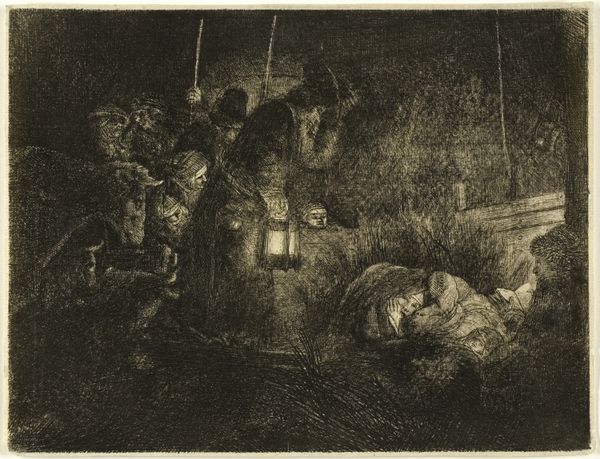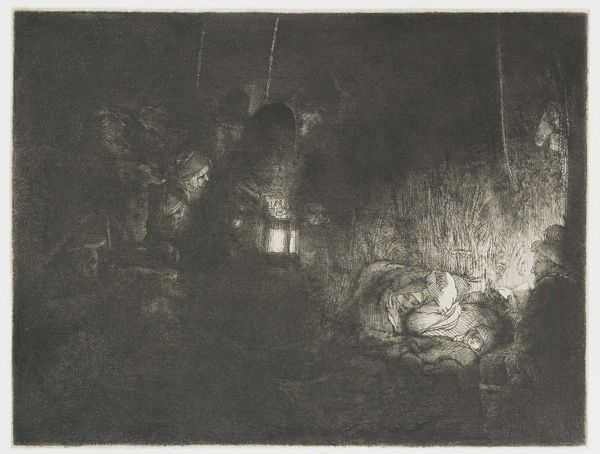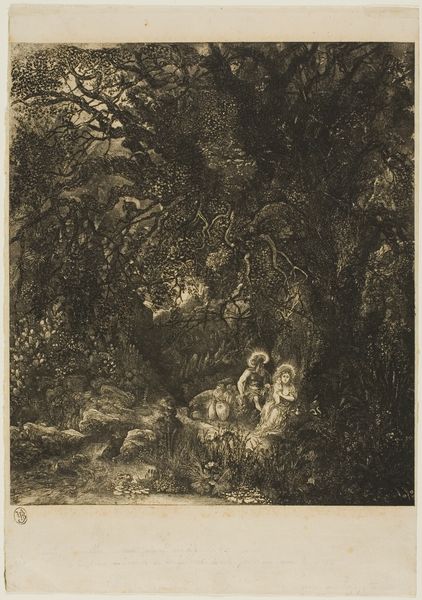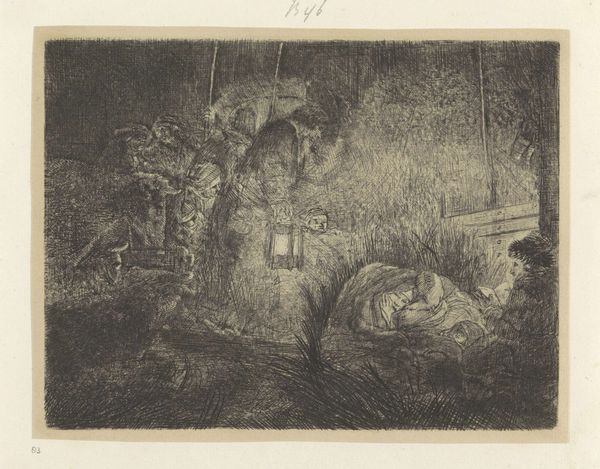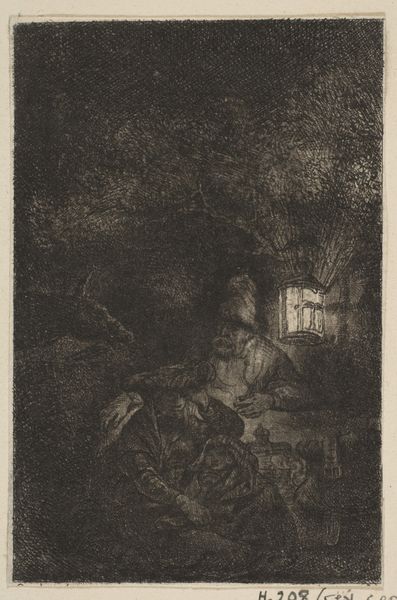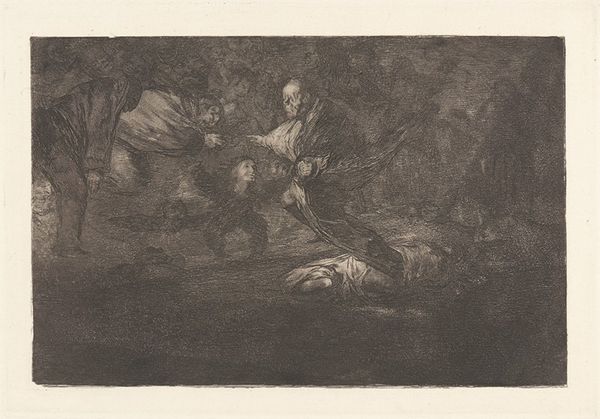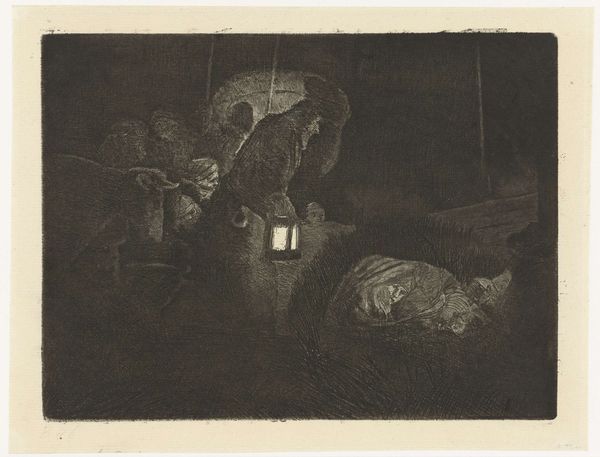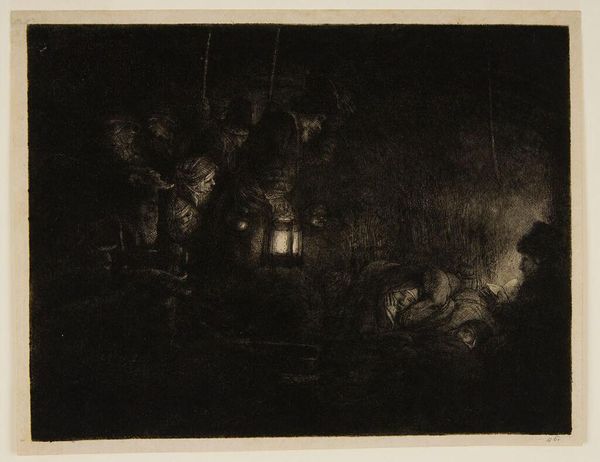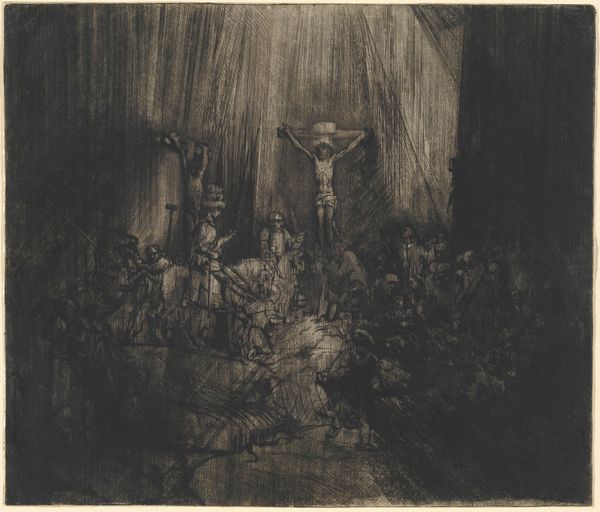
drawing, print, etching
#
drawing
#
narrative-art
#
baroque
# print
#
etching
#
old engraving style
#
landscape
#
chiaroscuro
Copyright: Public Domain: Artvee
Editor: Here we have Rembrandt van Rijn's "The Adoration of the Shepherds; A Night Piece," etched in 1657. It's a very dark print, but there's this incredible light source, clearly artificial, illuminating the figures. What strikes me is the emphasis on how people, specifically laborers like shepherds, are depicted. What do you see here? Curator: This etching provides an interesting view of art production during Rembrandt's time. He used etching, a process of repeated labor, to disseminate images to a broader audience. Consider the cultural impact: religious scenes, once accessible primarily through commissioned paintings for the wealthy, became available as commodities, reaching different levels of society. How do you think this shift influenced artistic patronage and viewership? Editor: That's a great point! I hadn't thought about the distribution aspect. I suppose it allowed Rembrandt a certain degree of independence, selling prints rather than relying solely on wealthy patrons. So the material act of etching itself democratized the image. Curator: Exactly. Think about the acid, the metal plate, the press... these are all materials and technologies shaping not just the image, but also its reception and social meaning. Rembrandt wasn’t just depicting a religious scene; he was engaging in a specific form of material production that altered the art world. Editor: It's fascinating how focusing on the materials and process gives you a completely new appreciation for the art. It almost feels like looking at the social impact of image making in the 17th century. Curator: Precisely. It reminds us that art is never divorced from the conditions of its making and distribution.
Comments
No comments
Be the first to comment and join the conversation on the ultimate creative platform.

